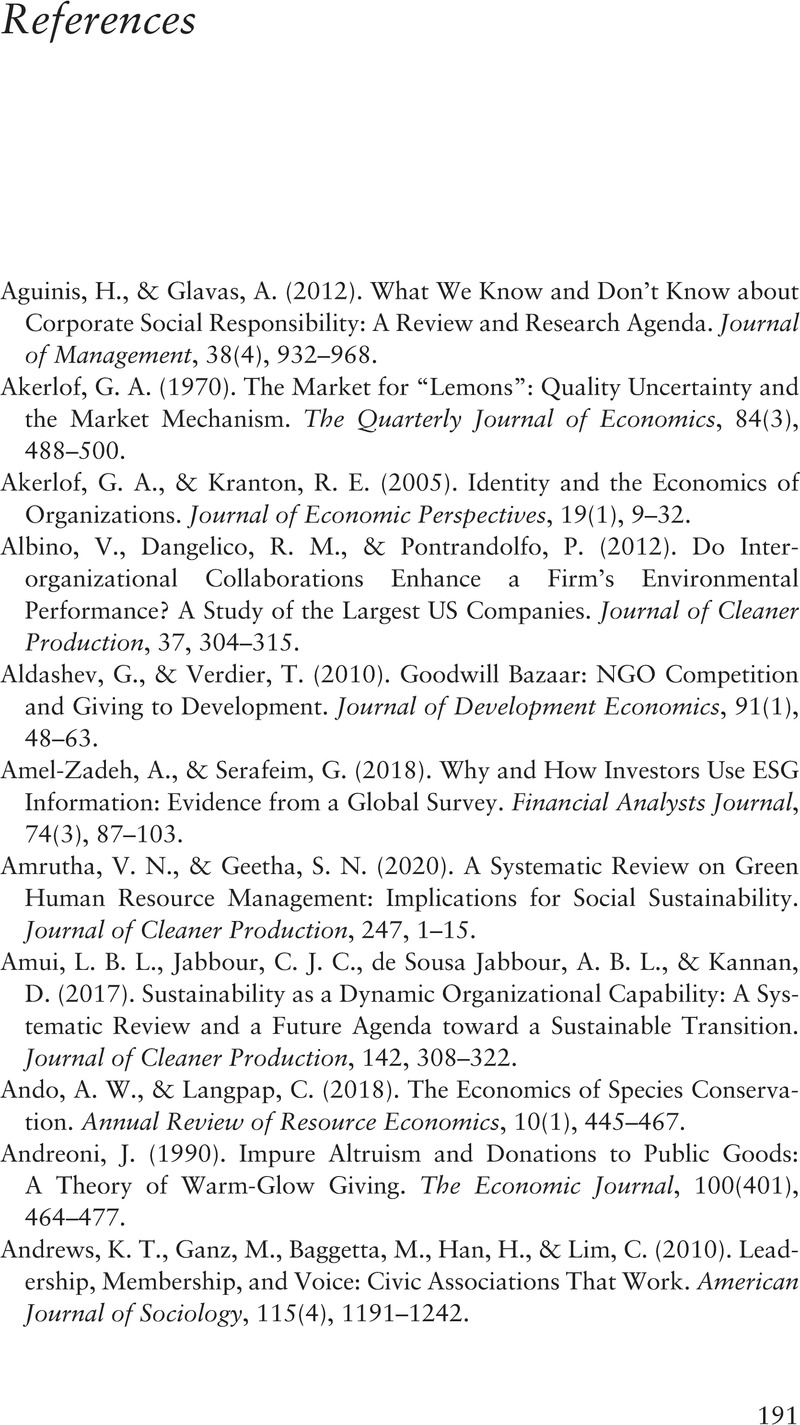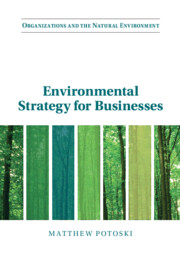Book contents
- Environmental Strategy for Businesses
- Organizations and the Natural Environment
- Environmental Strategy for Businesses
- Copyright page
- Contents
- Tables
- Preface
- 1 Introduction
- 2 Foundations and Background
- 3 Environmental Strategy Choices and Challenges
- 4 Nonmarket Strategy
- 5 Environmental Strategy and Strategic Resources
- 6 Green Products and Services
- 7 Employee Engagement
- 8 Environmental Groups
- 9 Conclusion
- References
- Index
- References
References
Published online by Cambridge University Press: 23 February 2023
- Environmental Strategy for Businesses
- Organizations and the Natural Environment
- Environmental Strategy for Businesses
- Copyright page
- Contents
- Tables
- Preface
- 1 Introduction
- 2 Foundations and Background
- 3 Environmental Strategy Choices and Challenges
- 4 Nonmarket Strategy
- 5 Environmental Strategy and Strategic Resources
- 6 Green Products and Services
- 7 Employee Engagement
- 8 Environmental Groups
- 9 Conclusion
- References
- Index
- References
Summary

- Type
- Chapter
- Information
- Environmental Strategy for Businesses , pp. 191 - 217Publisher: Cambridge University PressPrint publication year: 2023



